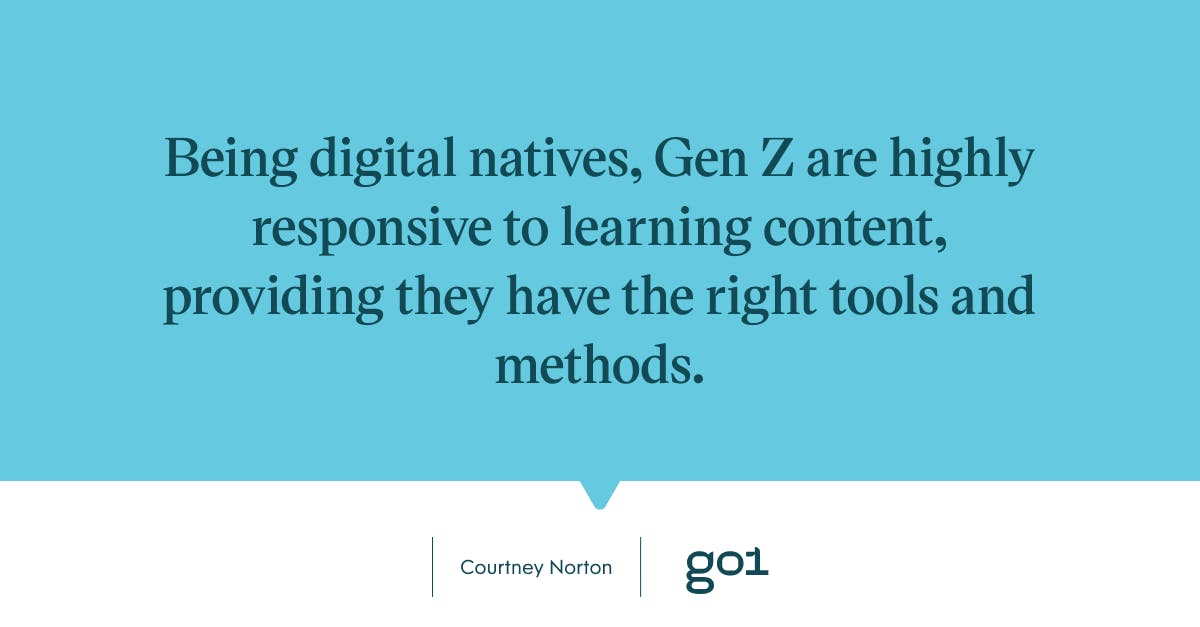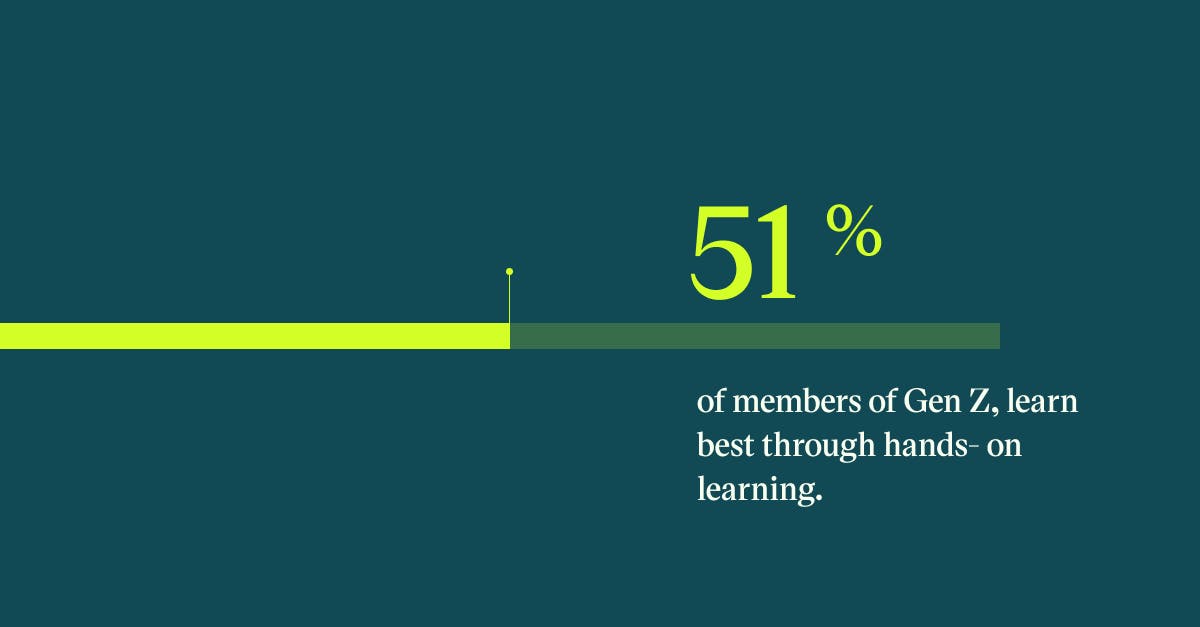
Bridging the skills gap for Gen Z learners

People of all generations currently in the workforce have had their typical ways of work and learning change from what they once knew, and it certainly hasn’t always been an easy adjustment.
For one generation in particular, all these changes came at a time when they’d only just begun to enter the workforce. Or were in the throes of finishing formal education and preparing to enter it. Gen Z, whether we expected it or not, have become unwitting test subjects as we navigate what works and what doesn’t in a world where remote working and learning has become the norm.
While they have no doubt learned a number of valuable tech skills, many have missed out on learning other skills that previous generations had the opportunity to naturally learn while working in physical work spaces.
Not only that, by having little to no experience in the physical workplace, members of Gen Z may miss out on opportunities to socialise with colleagues and team mates. Whether employees realise it or not, these experiences often become important learning opportunities. As a result, a skills gap of non-tech skills has emerged for Gen Z learners.
It’s not for lack of wanting to have those non-tech skills either. Gen Z are keen learners. We just need to develop the best strategies to help bridge this gap, that take into consideration the type of learners Gen Z typically are, as well as the way in which the workforce looks today.
To do this, we need to ask two key questions: what exactly are the skills that Gen Z are missing? And how can L&D leaders take practical steps to help their Gen Z learners bridge that gap?
In terms of what exactly this skill gap is, Dell recently conducted a survey of over 12,000 members of Gen Z (age 16-23) and found that 52% of Gen Z are more confident that they have the tech skills that employers want versus non-tech ones. Some examples of non-tech skills include communication skills, decision making skill and teamwork skills.
Undoubtedly, these are extremely valuable skills that are applicable to any industry and Gen Z deserve to have the opportunities to hone these skills, just like previous generations.
Gen Z are the first generation to not remember life before internet was a common feature in most homes and as such, are often labelled as ‘digital natives.’. Being digital natives, Gen Z are highly responsive to learning content, providing they have the right tools and methods. We can liken the idea to that of a marketing campaign. In order to reach the target audience (Gen Z learners) effectively, we need to meet them in their natural habitat (digital technology).

Being digital natives also means that members of Gen Z can often have very short attention spans, which may appear to be a barrier to learning. However, by providing learning content through tools and formats Gen Z already use, Gen Z are far more likely to stay attentive - and therefore are more likely to remember and retain the content being taught.
Another point to consider when helping Gen Z to bridge the skills gap is the value of experiential learning (learning by doing). In fact, 51% of members of Gen Z, learn best through hands-on learning, while only 12% learn best through listening.

Some excellent formats that combine both the tools Gen Z are familiar with and experiential learning are games, simulations, case studies and challenges. These formats allow for reflection, analysis, testing and experimentation, all of which assist with information retention. When we pay attention to the needs and concerns of Gen Z learners, it’s much easier than we may think to help them gain the non-tech skills they may have missed by joining the workforce during a time of major change.
Furthermore, when L&D leaders teach them not only what to learn but also how to learn, they are providing Gen Z learners with the tools they need to help them become successful in both their career and community.
For more insights, be sure to subscribe to the Go1 newsletter to stay on top of all the latest L&D trends. Or, you can book a demo today to find out how Go1 can help with your team’s (including Gen Z) learning needs.



